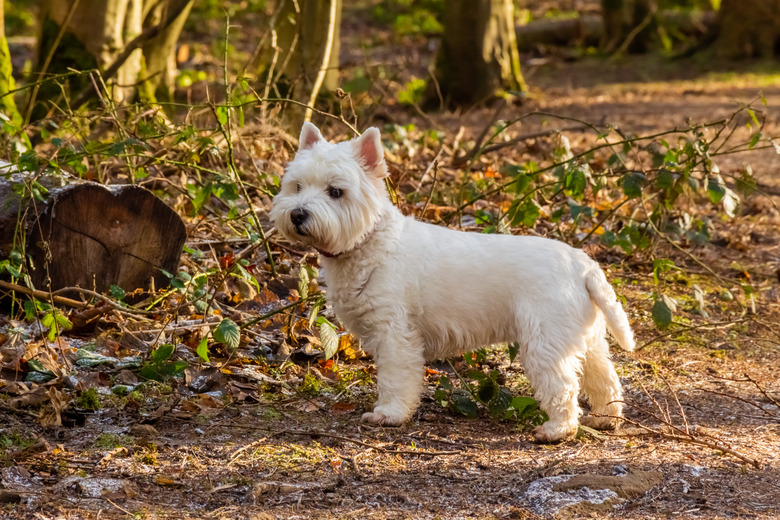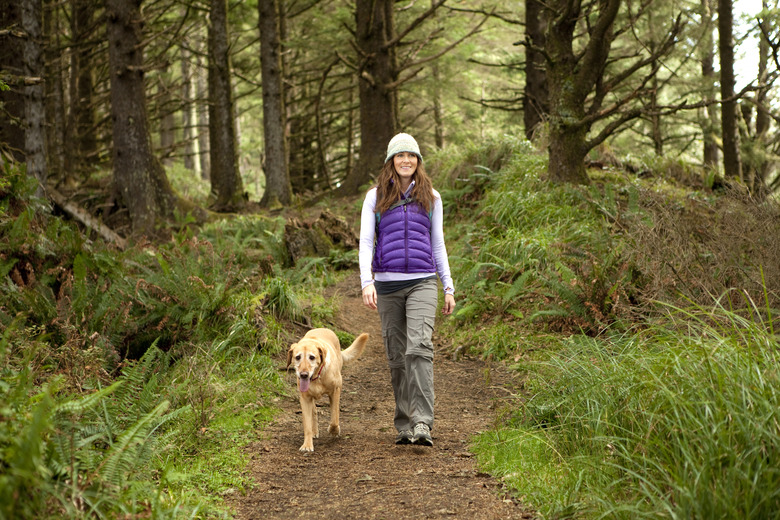Why Do Dogs Eat Tree Bark?
You love that gnarly lilac in the backyard, but your dog wants to gnaw and shred the outside of this poor, defenseless tree. What gives? The reason dogs eat tree bark or chew on a number of nonfood items may be pinned to a variety of behaviors, such as a case of boredom or the fact that the texture is appealing. Bark eating may also be related to a couple of health conditions, including teething in a puppy and pica. It's imperative that you're familiar with any backyard flora your dog may chew since plants dangerous to dogs could be lurking in and around your house.
Plants dangerous to dogs
Plants dangerous to dogs
Plants dangerous to dogs are a concern both inside the house and out on the lawn, so always supervise your pet when he's playing in the yard. A dog who is keen to chew bark may pick a tree or shrub that's toxic, such as cherry, azalea, oak, juniper, red maple, or sumac. If your dog manages to remove chunks of the tree's bark, she could cut the inside of her mouth, or it could become wedged between her teeth and gums, resulting in a serious injury that may bleed and require a visit to the vet.
Chewing due to boredom
Chewing due to boredom
Just as some pets chew baseboards, your new leather purse, or a thick college textbook out of boredom, gnawing on tree bark or plants can also be a sign that your dog is lonely or anxious. A pet who doesn't enjoy regular exercise, stimulation via appropriate chew toys, or games of fetch may turn to other less than desirable ways to occupy his teeth.
Gnawing to relieve teething
Gnawing to relieve teething
For several months during the puppy stage, dogs cut new teeth in the same way that human babies do, which means their mouths may ache. Chewing on bark or other items to relieve the discomfort is normal behavior, but it's a risk if your pet chooses trees or plants dangerous to dogs.
Icy cold can soothe sore gums, so give your teething puppy some relief by offering playthings, like rings and other chew toys that can be frozen. Chewing on bark may also be a matter of the wood's texture. This desirable substance along with plastic is crunchy and satisfying in a dog's mouth (again, make sure she has dog-safe toys to play with).
Bark eating could be pica
Bark eating could be pica
A dog who is prone to eating nonfood items, like wood, rocks, or clothing, may have a condition known as pica. The causes of a case of pica may include stress, cognitive dysfunction, a behavioral disorder, or a medical condition, such as a gastrointestinal issue or a nutritional deficiency, especially if you serve your dog a homemade diet. If your dog constantly chews stones, sticks, or other nonfood objects, it's a good idea to have your pet evaluated by a vet.
Distract tree bark eating
Distract tree bark eating
You can retrain a dog who is exhibiting destructive chewing on a tree or plant by using positive reinforcement to praise them when they don't chew (deterrent sprays are considered punishments and are generally not recommended any longer). You might also try to distract your dog with an assortment of toys filled with food (think peanut butter or bits of cheese) and be sure to make regular exercise a part of your pet's daily routine. Walks in the park, a romp at the dog run, or a stroll on the beach are all excellent ways to stimulate your dog's senses and burn off energy. Leash your pet when you're on outings so he can't chew tree bark or anything else that's potentially toxic.
References
- Center for for Animal Rehab & Education: Non-Toxic and Toxic Woods
- American Kennel Club: Sticks and Stones – Can They Hurt Dogs?
- American Kennel Club: Why Does My Dog Chew My Furniture and Baseboards?
- American Kennel Club: The Best Puppy Toys
- American Society for the Prevention of Cruelty to Animals: Behavior Problems in Older Dogs

